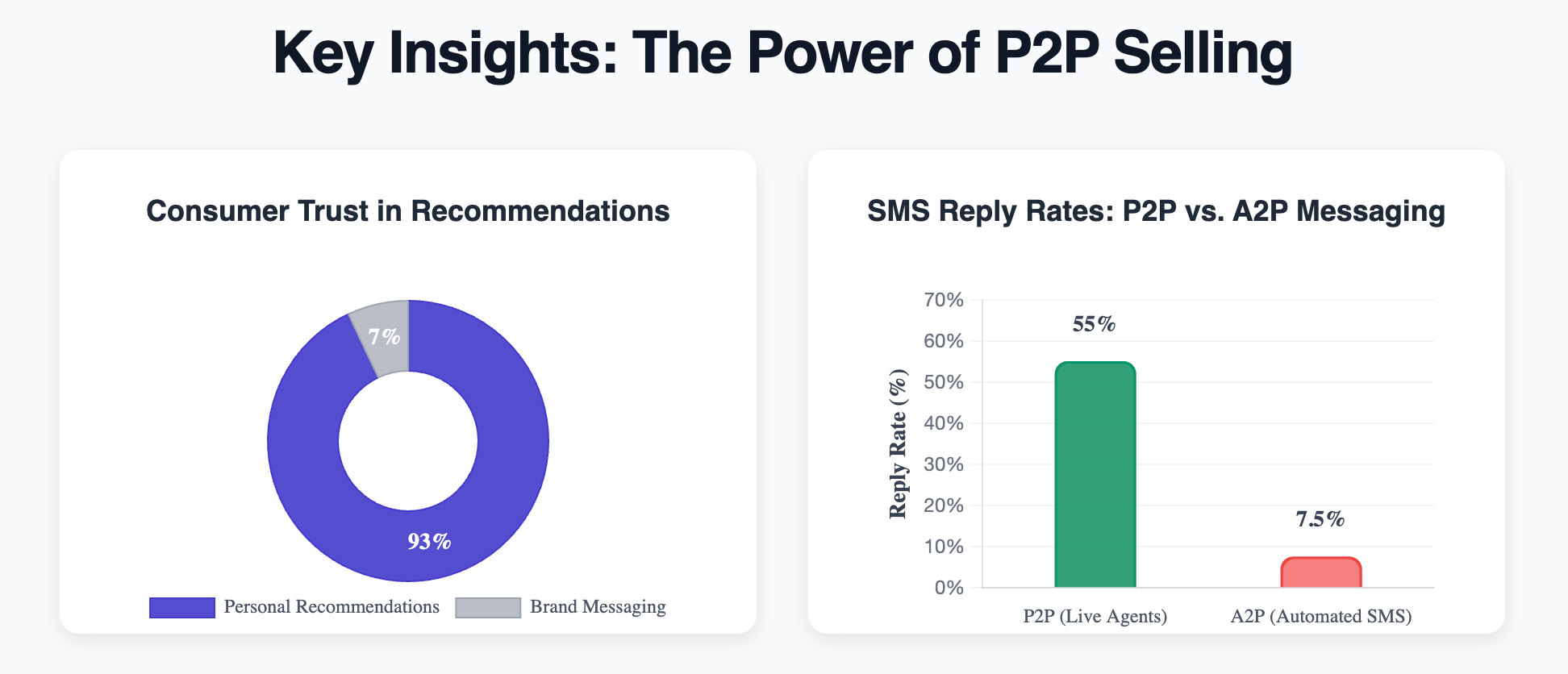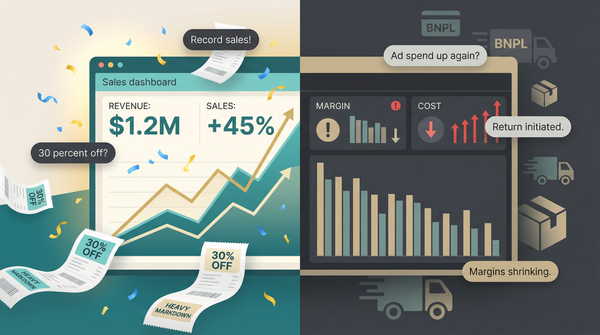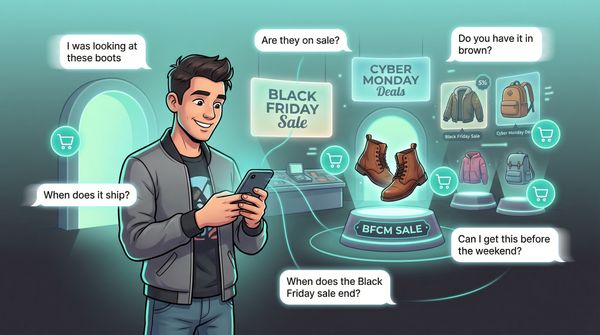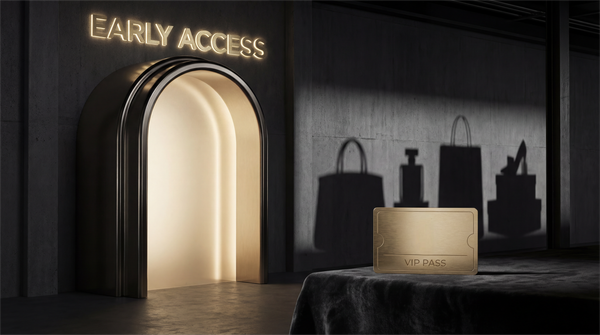Why the Smartest Brands in DTC are Leaning in to P2P Sales

DTC operators love their acronyms: LTV, CAC, MER. But here’s one that actually deserves a spot in your playbook: P2P.
Peer-to-peer sales isn’t about affiliates. It’s not multi-level marketing. And it’s definitely not new. You’ve seen it happen a thousand times—someone raves about a product in a WhatsApp group or answers a “where’d you get that?” comment in a TikTok reply. P2P is just people convincing people to buy.
What’s changed is how DTC brands are now designing for those moments—using tools, teams, and messaging channels that enable humans (not automations) to tip customers over the line.
And while most operators are still optimizing flows, smart ones are optimizing relationships—with P2P strategies that are quietly outperforming traditional funnels.
What P2P Selling Looks Like (and What It Isn’t)
Let’s clear the air: peer-to-peer doesn’t mean affiliate links and coupons.
In DTC, P2P means a real person engages another person 1:1 to help them decide. That might be:
- A CX agent texting a shopper who bailed on their cart
- A community member answering a fit question in Discord
- A post-purchase SMS that actually reads like a human wrote it (because one did)
P2P works because it feels like a conversation, not a campaign. There’s trust. There’s tone. And there’s someone on the other end who’s actually listening.
Contrast that with the brand-to-many messages most of us are used to getting.
Why P2P Is Converting—and Scaling
This isn’t just about feel-good CX. P2P selling is working where traditional tools are hitting ceilings.
- Consumers trust people more than brands. 93% of shoppers trust personal recommendations over brand messaging (HubSpot).

- Text messages from humans get read and replied to. Live agents see 50–60% reply rates vs 5–10% for automated SMS (LiveRecover).
- Real-time interaction = real-time conversion. When a shopper can ask, “Does this run small?” and get an answer in 30 seconds, they’re more likely to buy—especially when the reply feels like a person, not a macro.
And this is where it gets interesting: most SMS strategies aren’t built for that.
The Problem with Traditional SMS: A2P Isn’t Built for Conversations
Most brands use what’s called A2P (application-to-person) messaging—which is exactly what it sounds like. A system sends texts to a list of subscribers. It’s fast, cheap, scalable. But it’s also limited by regulation, consent, and conversation design.
To legally send A2P messages in the U.S., a brand needs:
- Explicit written opt-in
- A compliant short code or toll-free number
- To follow strict carrier rules about frequency, quiet hours, and content type
And most importantly: A2P messages aren’t built to feel human. They come from bots or templates. And shoppers know it.
That’s why engagement drops off. That’s why replies often go unanswered. And that’s why even “great” SMS programs top out at 10–15% click-throughs on a good day.
P2P flips this.
Enter P2P SMS: The Scalable Human Touch
P2P SMS (person-to-person) changes the channel entirely.
Instead of a system blasting a promo, a real person sends a real message. It’s legally classified as a one-to-one conversation, which:
- Doesn’t require the same kind of marketing opt-in
- Uses a normal 10-digit phone number, not a shortcode
- Can go deeper than a discount offer—because there’s someone on the other end to respond
Here’s the kicker: most DTC checkout flows collect a phone number but don’t get SMS marketing consent. That means A2P flows can’t legally follow up. But a P2P tool like LiveRecover can.
This is the hidden unlock: you can reach far more cart abandoners through human-powered SMS than you can through automated flows—legally and ethically.
Two of the best and easiest to recommend SaaS products for growth?@LiveRecover & @Marpipe_HQ
— Kody Nordquist (@KodyNordquist) March 12, 2025
If you're running a 7-9 figure eCom brand and not using both of these you're missing out....
(Source, X)
Why LiveRecover Works So Well
LiveRecover sends a single, thoughtful message from a real human to a shopper who abandoned checkout. That person can ask a question, get a clarification, maybe even a custom incentive.
This @LiveRecover is perfect example of "it just works!". I set it up once and it just runs in the background generating sales for me.
— Aditya⚡ (@adityarao310) July 9, 2024
And they only take a fees as % of sales. I just check it once every few days to check customer conversations and new insights if any!
(Source, X)
And the results speak for themselves:
- 55% of messages get replies
- 21% of conversations turn into completed purchases (PurshoLOGY)
- Thinx used it to recover $450K+ in abandoned carts (LiveRecover Blog)
- MONSTERBASS saw a 160% lift in recovered checkouts and a 4% increase in total revenue (Voyage SMS)
Yesterday I became a paying customer of @LiveRecover
— Nate Lagos📈 (@natelagos) February 22, 2024
I've been aware of the service (and others like it) for awhile, but was always skeptical.@SteveLeq30 gave us a free trial to get us through our Valentine's Day sale, and let's just say I'm not a skeptic anymore
100% worth…
(Source, X)
What makes it different isn’t just the human agent. It’s the interaction:
“If you can prove you’re real, I’ll buy,” one shopper texted.
The LiveRecover agent replied with a SpongeBob meme.
The shopper converted.
More Than Recovery: The Future of Conversational Commerce
Cart recovery is the obvious P2P use case. But it’s just the start.
- Upsells. “Hey! Since you grabbed X, a lot of customers also love Y—want me to add it for you?”
- Check-ins. “Just saw your order delivered—how’d it go?”
- Feedback. “Any questions or issues with the product? Happy to help.”
These messages don’t feel like customer service. They feel like someone who works at the brand is looking out for you.
That’s what builds loyalty. That’s what turns a one-time buyer into a repeat one.
And that’s what P2P does best: makes digital shopping feel personal again.
The Takeaway
You don’t need to rebuild your funnel. You just need to rethink how you close.
P2P selling doesn’t replace email or paid. It just fills in the gaps—the moments where a human touch is what makes the difference.
For operators who are serious about revenue, retention, and building a brand people talk about, P2P isn’t a tactic. It’s a shift.
And if you're still letting high-intent shoppers slip through without ever hearing from a real person? Start there—with LiveRecover.
Subscribe for weekly DTC insights.
custom_author: "Corey Epstein"




